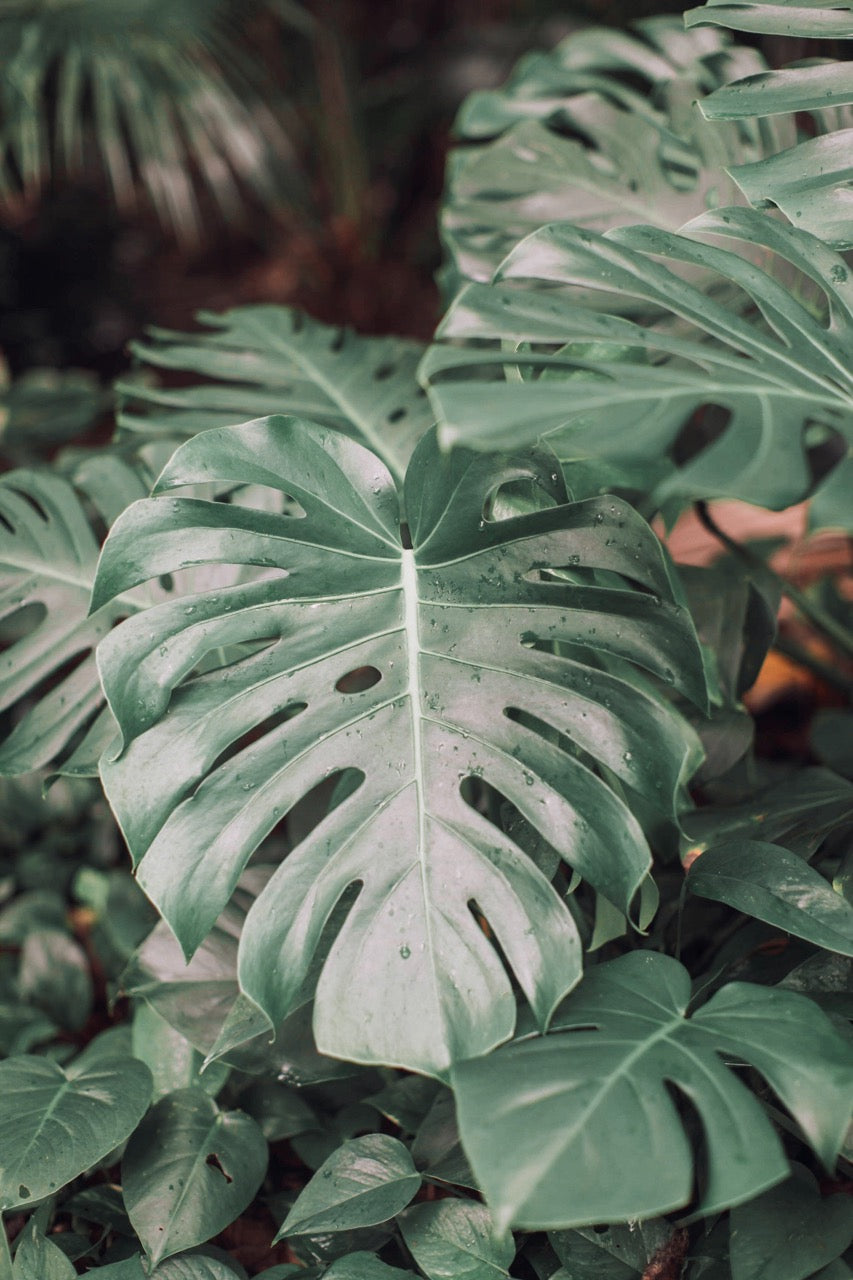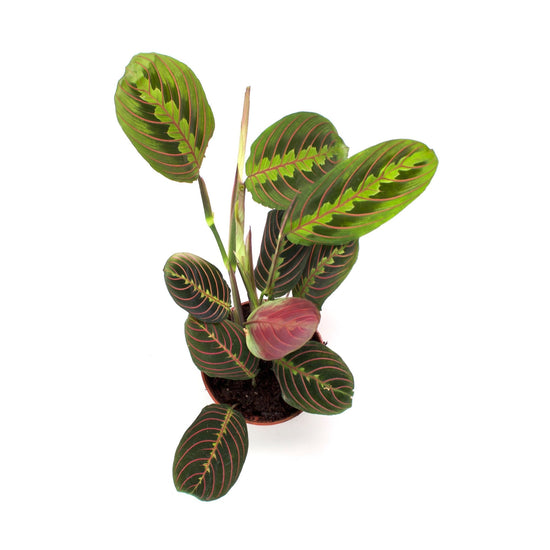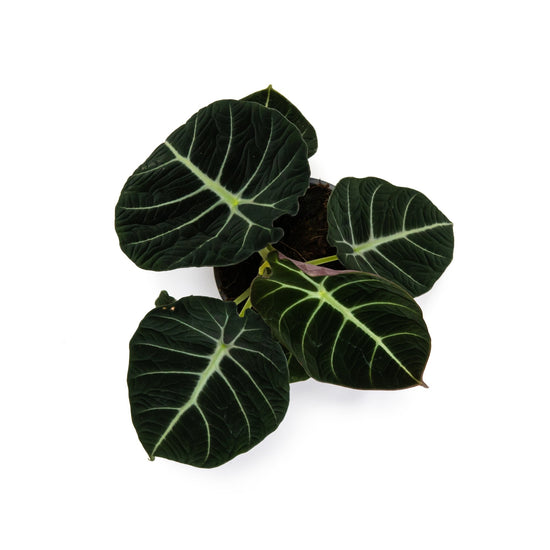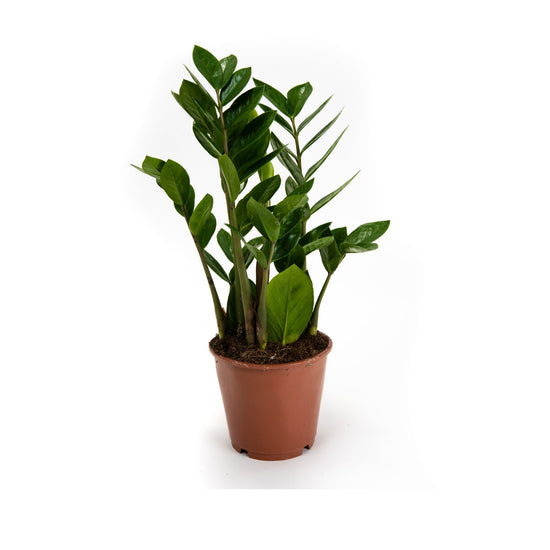Table of Contents
Looking for a plant that is both exotic and easy to care for? Then look no further than the Monstera. The most famous species, the Monstera Deliciosa, is also called Hole Plant because of its perforated foliage. This striking tropical plant requires surprisingly little care, making it a great choice for busy plant enthusiasts.
Care for the Monstera (Hole plant)
Water

Although the Honey plant needs little care, you should water Monsteras about once a week or when it is about 50% dry. Water the plant until it comes out through the drainage holes. Make sure that you pour away all the water that collects in the saucer under the pot so that the Swiss cheese plant does not stand with its roots in the water.
In addition to an occasional sip, spraying the Monstera is also part of the care. Why?
-
To increase the humidity around the Swiss cheese plant (tropical plants like that).
-
To remove dust from the plant (so photosynthesis goes more smoothly).
Light and temperature
Monsteras like bright, indirect light to partial shade. Direct sunlight can burn the plant. If the plant doesn't get enough, the leaves can turn yellow. Monsteras prefer to be nice and warm in a place that does not get colder than 15 degrees.
Repot
Monsteras must be repotted every 2 years, or when the roots no longer have enough space (squeeze your pot, is there hardly any movement left? Then the plant has too little space) . Choose a new plant pot with drainage holes that is about 2 cm wider than the current one and use well-draining potting soil. All in all Monsteras like to sit tight in the pot, so don't worry if you skip repotting.
Power supply
Fertilizer is an important part of the care of your Swiss cheese plant. Monsteras should be fed about once a month during the growing season (spring and summer). They are not big eaters so follow package directions and don't overdo it. Too much fertilizer can burn the roots and leaves of the Monstera plant. We recommend using organic houseplant food.
Pruning and tying up
 Monsteras can be pruned to keep them looking neat or to encourage them to grow in a particular direction. Monsteras are also climbers so they will like to grow up along a support, for example trellis or a moss pole. When pruning your Swiss cheese plant, make sure you use clean, sharp shears. Make sure you cut below a knot, then you can use the cutting to propagate the plant and grow new houseplants!
Monsteras can be pruned to keep them looking neat or to encourage them to grow in a particular direction. Monsteras are also climbers so they will like to grow up along a support, for example trellis or a moss pole. When pruning your Swiss cheese plant, make sure you use clean, sharp shears. Make sure you cut below a knot, then you can use the cutting to propagate the plant and grow new houseplants!Cuttings
The Monstera can easily be propagated by simply cutting a piece of stem from the plant (preferably with leaves) just below a leaf node.Stick the cutting in moist soil or soil and after a few weeks the cutting will take root!
Typical Monstera Problems
No holes in the leaves of Monstera Deliciosa
Monstera Deliciosa is known for its perforated, green leaves, but sometimes you will find a leaf without holes This is usually nothing to worry about: they often produce such a leaf when they are exposed to stress or when the plants are still young. If the houseplant is otherwise healthy and well cared for, you don't have to worry about one or two leaves without holes.
If you only see this kind of leaves, try moving the Monstera to a shadier spot (they like that) or see if you can change anything about the condition or care of your plant .
Diseases
 The Swiss cheese plant is generally quite resistant to disease but there are some problems that can occur. Fungal diseases such as root rot are the most common and are usually caused by too much water. Cut away the rotten roots (they look slimy and brown) and repot the houseplant in fresh, well-draining potting soil. Then only give the Swiss cheese plant another sip when the soil feels dry.
The Swiss cheese plant is generally quite resistant to disease but there are some problems that can occur. Fungal diseases such as root rot are the most common and are usually caused by too much water. Cut away the rotten roots (they look slimy and brown) and repot the houseplant in fresh, well-draining potting soil. Then only give the Swiss cheese plant another sip when the soil feels dry.Curled leaves
If you notice that the leaves of your Monstera are starting to curl, this could be for two reasons:
-
Too much direct sunlight: Monsteras prefer bright, indirect light to partial shade, so try moving the plant to a spot in the house with less direct sunlight.
-
Too little humidity: You may need to increase the humidity around the Monstera. Try to spray the Monstera more often or move the plant to a more humid area such as a kitchen, bedroom or bathroom.
Discolored leaves
A Monstera that is half yellow is usually caused by care errors:
-
Overfeeding: Monsteras are not heavy eaters, so follow package directions and don't overdo it.
-
Too much water: when the Monstera gets too much water or is left in the wet for too long.
Toxic to pets?
The monstera is poisonous to cats and dogs. If your pet eats any part of the plant, contact your vet immediately.





